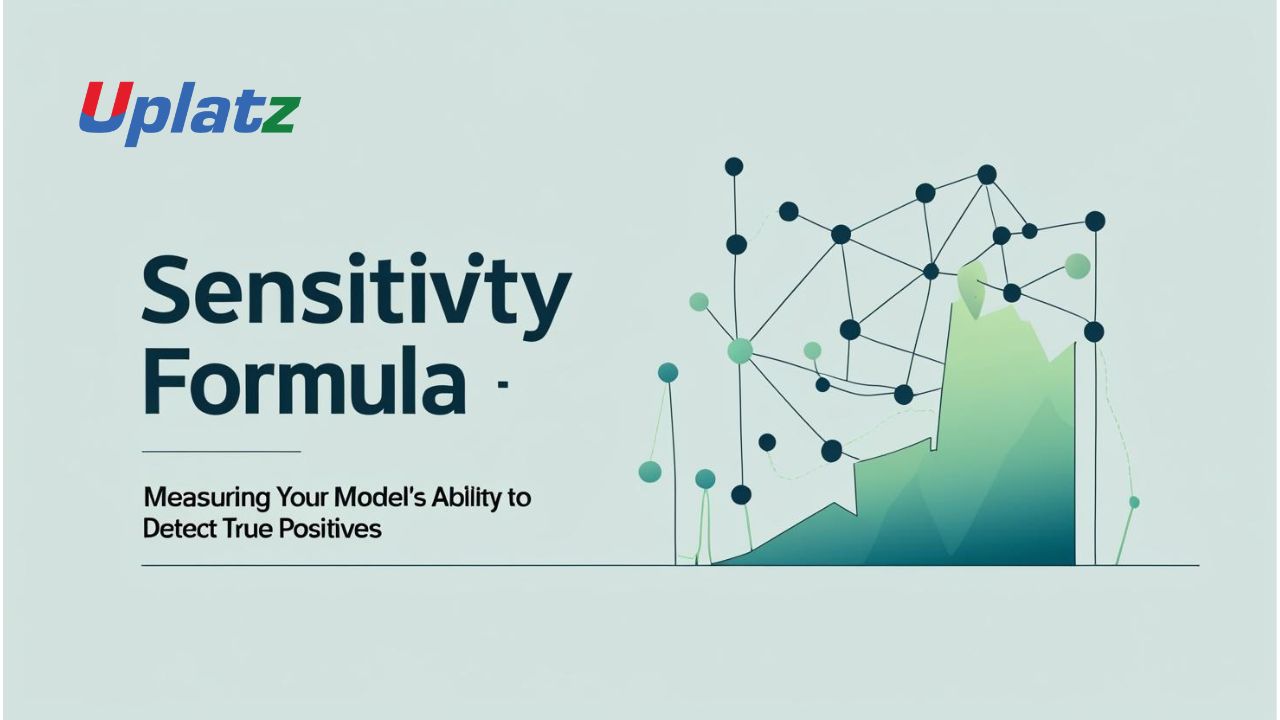 🔹 Short Description:
🔹 Short Description:
Sensitivity, also known as recall or the true positive rate, measures how effectively a model identifies actual positive cases in a dataset.
🔹 Description (Plain Text):
The sensitivity formula—also referred to as recall or the true positive rate (TPR)—is used to evaluate a classification model’s ability to correctly identify positive instances. It answers the question: “Out of all actual positive cases, how many did the model get right?”
Formula:
Sensitivity = TP / (TP + FN)
Where:
- TP (True Positives) – Actual positives correctly predicted
- FN (False Negatives) – Actual positives that were missed
Example:
Consider a disease screening model that tests 100 people:
- 20 have the disease (positives)
- The model detects 18 correctly (TP = 18), but misses 2 (FN = 2)
Then:
Sensitivity = 18 / (18 + 2) = 0.90 or 90%
Why Sensitivity Matters:
Sensitivity is critical when the cost of missing a positive case is high. For example, failing to detect cancer in a patient can be far more damaging than a false alarm. A high sensitivity ensures your model is good at catching what it’s supposed to find.
This metric is often paired with specificity to assess how a model performs on both sides of a classification problem—detecting both positives and negatives effectively.
Real-World Applications:
- Medical diagnostics: Ensuring actual cases of disease are identified
- Fraud detection: Finding all possible fraudulent transactions
- Risk assessment: Identifying high-risk customers or scenarios
- Spam filters: Flagging all potential spam emails
- Search engines: Returning all relevant results for a query
Key Insights:
- Sensitivity focuses on minimizing false negatives
- Especially valuable when positives are rare but important
- Used interchangeably with recall and true positive rate
- High sensitivity is often prioritized in safety-critical systems
- Should be considered alongside specificity for a full view of model performance
Limitations:
- Doesn’t account for false positives — a model could have high sensitivity but low precision
- May lead to over-prediction in pursuit of not missing positives
- Alone, it doesn’t provide a full picture of model reliability
- Needs balance with precision or specificity depending on use case
Sensitivity is all about catching what truly matters. It’s your go-to metric when you want to be sure your model doesn’t overlook anything important, making it essential for healthcare, security, and compliance systems.
🔹 Meta Title:
Sensitivity Formula – Boost Detection Accuracy with True Positive Rate
🔹 Meta Description:
Learn the sensitivity formula to measure how well your model identifies actual positives. Discover its role in healthcare, fraud detection, and risk modeling, and how it improves classification performance by reducing false negatives.
